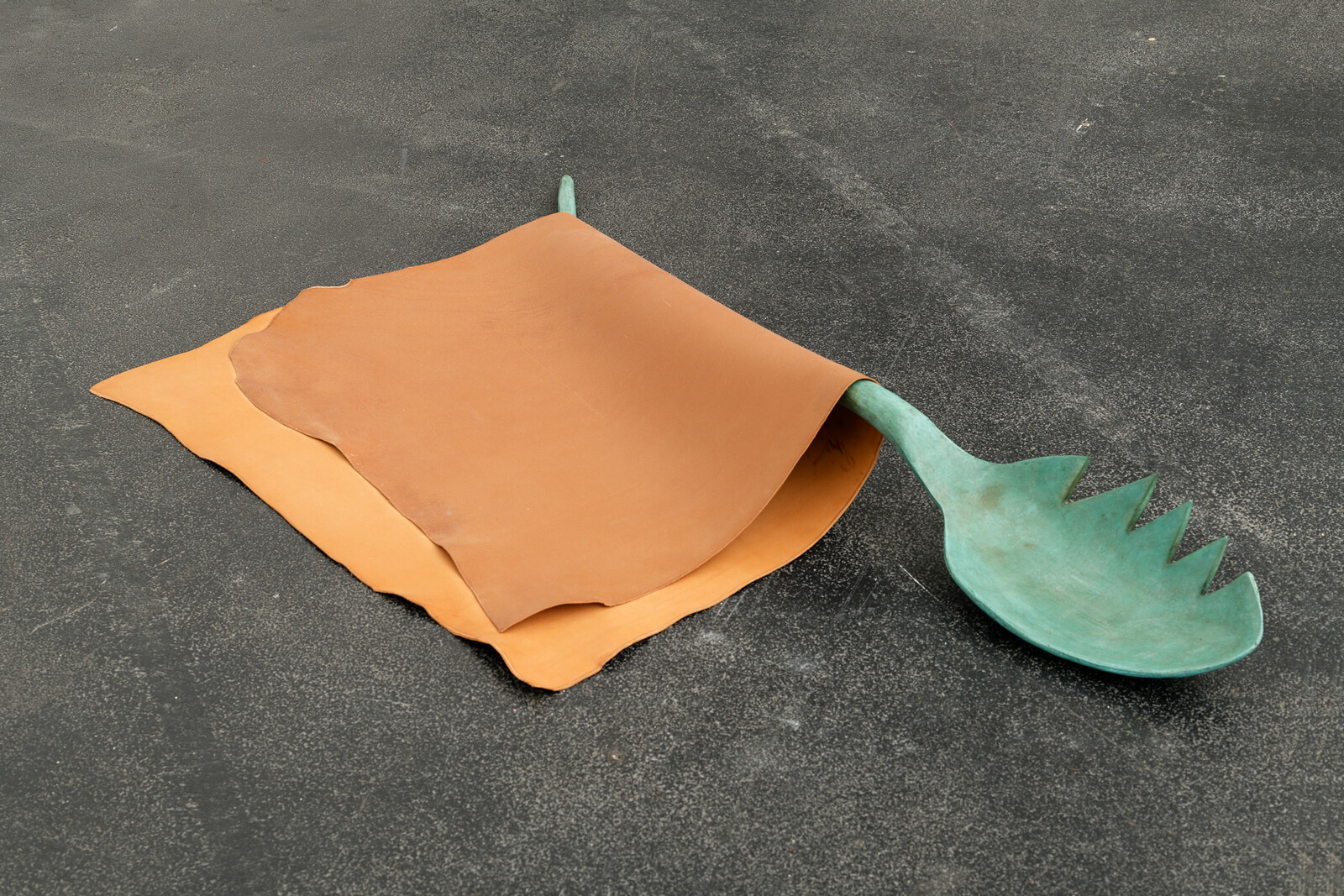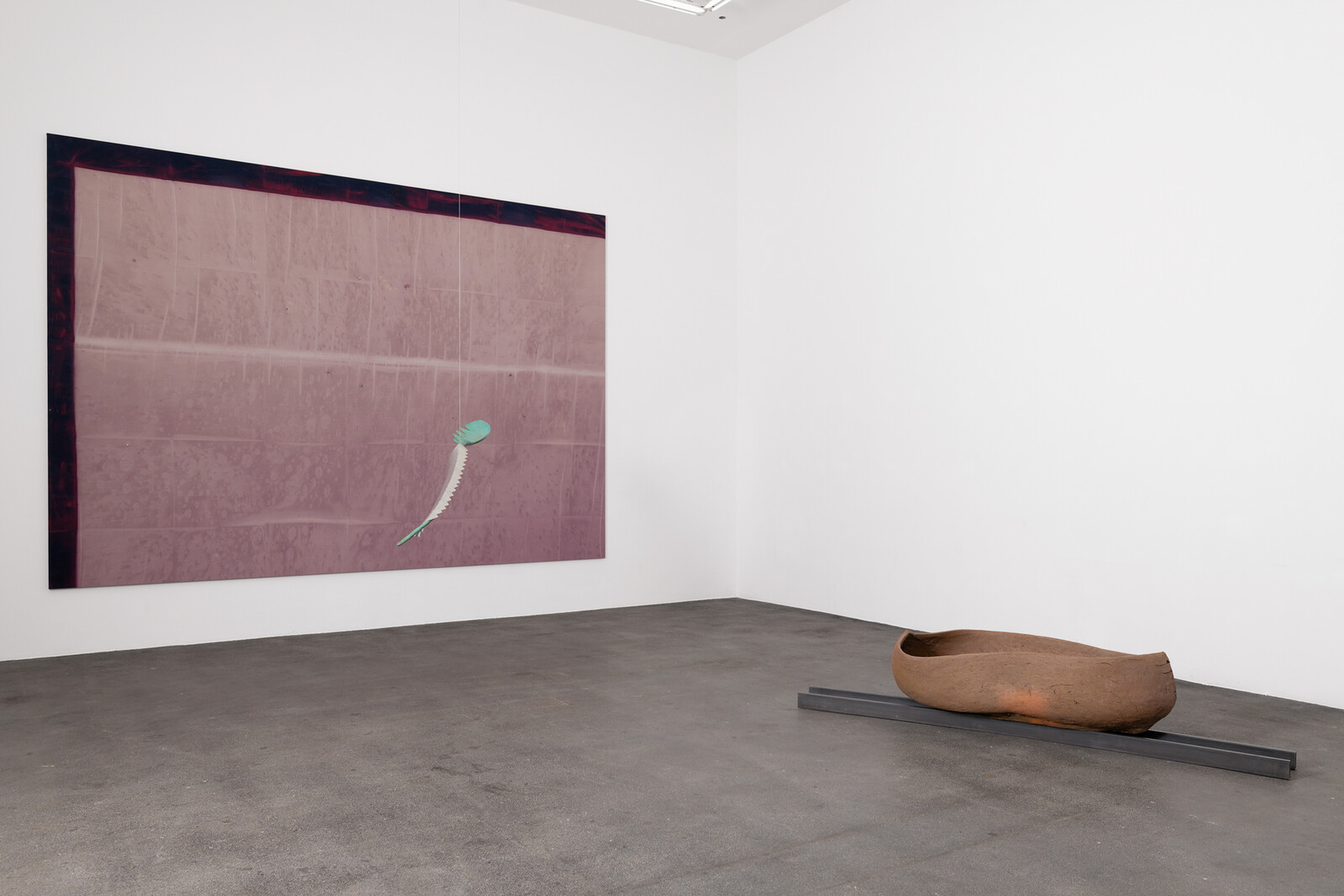Silver
July 1, 2023–January 7, 2024
26 quai Aspirant Herber
34200 Sète
France
Hours: Wednesday–Monday 12:30–7pm,
Saturday–Sunday 2–7pm
T +33 4 67 74 94 37
crac@laregion.fr
Katinka Bock’s sculptures, made of ceramic, stone, wood or metal, have deep links with the sites in which she exhibits, the architecture of the place that welcomes her, or even sometimes the cultural, historical or social context of a city.
When she first visits the place where she will exhibit, she “sounds out” the space, observing its shape, the interconnection of its rooms, the circulation of the building’s lighting and fluids, but also the way it integrates into a district or city, what use is made of it by the people who pass through or inhabit it. How it is “shaped” from the inside and outside.
In Sète, Katinka Bock explored the omnipresence of water. The sea on one side, the lake on the other, and the canals that structure the city: all of these deeply infuse its imagination and culture. The new film produced for the exhibition, made on Sète’s beaches and canals, consists of a montage of shots captured with her Super 8 camera, like a series of visual notes. The city is filmed from the canals, giving us the sensation that it is always being seen “from the edge”. This is a notion dear to the artist, whose sculptures materialise the question of the threshold, the limit, the distance between objects, between bodies and spaces.
She also raises the question of what holds us together or separates us. In an interview published in 2019(1), Katinka Bock said: “How does a population structure and express itself and what are the dynamics that link the individuals of which it is made up? And what distances exist between them? (…) Living together is never neutral, never a statement of fact; it is always the assertion of a position. We are obliged to make decisions. We can change our minds, but we always take up a position. I try to consider this question sculpturally by choosing positions in the space, in terms of distance, height, posture, etc.”
The notions of measurement and body are present in the exhibition, as in the case of a work entitled Horizontal Alphabet, made up of a set of several hundred terracotta bricks placed on the floor. The size of each brick was based on the measurement of the hand and foot of several hundred people who agreed to take part in the project. The inch, the cubit, and the foot are all systems of reference, of which language has kept a trace . The difference between the singularity of bodies and the mathematical objectivity of measurement tools finds powerful translation in this work. This is also the case in One Meter Space: the artist asked several people to use their hands to show her the length of a metre , taking measurements with a rope, and making a knot between each one. The result is a thin rope one hundred metres long, on which each distance is different. Everyone’s measurement is always related to someone else’s. In the expression “to measure oneself against” we find the tension that can exist in the confrontation with that other person. Certain figures of bodies in armour have recently appeared in Katinka Bock’s work, as have certain objects like spoons, forks and spears, which are all extensions of the hand and body. A body that is struggling or in a defensive position. A body that is armed.
The journey and the presentation offered by Katinka Bock at the Crac is a work of meticulous connection between the works in all of the rooms, a visual writing structured by different phases. As her titles show, language holds an important place in her practice. The exhibition title itself gives a glimpse of the polysemic richness that runs through her work . For the artist Silver is at once the name of a pirate in Stevenson’s Treasure Island, the silvery reflection of the sun on the sea, silver-based analogue photography, the metallic grey of industrial architecture, Sol LeWitt ’s mural drawings made with graphite, or the greying of hair with age. A character, a material, a light, a transformation of the body, Silver is all of this at the same time. It is this poetic circulation between objects, images and bodies that one finds in the exhibition.
It is often a question of disappearance, absence, links, thresholds and limits in Katinka Bock’s work. The precariousness, impermanence, balance or imbalance of her sculptures bring into play rupture points and borderline states of material, along with their intrinsic poetry. Some materials transform the works over time: salt oxidises, fruit decomposes, works are subjected to bad weather or water erosion…
A new series of stone sculptures produced for the exhibition was conceived based on used soap bars. The shape of these objects apparently without quality was produced through the random repetition of gestures by the hands that rubbed them every day. These soap bars, infused with use over time, and with an intimacy with the body, are enlarged and transformed in stone, which becomes a support for other sculptures.
Pressure, folding and rolling gestures are recurrent in the materials manipulated by the artist, particularly clay and leather. We find their traces in the material, but also in certain photographic images that represent body fragments with imprints on skin. Katinka Bock’s photographic work, which she often speaks of as the periphery of her practice, shows its full importance in the exhibition alongside her sculpture work, with which it intimately converses.
After several major exhibitions in 2018 and 2019 at various European institutions (Institut d’art contemporain, Villeurbanne; Mudam, Luxemburg; Kunst Museum Winterthur, Switzerland; Lafayette Anticipations and the Centre Pompidou in Paris), this new large exhibition in a French institution offers a chance to discover a body of important works by Katinka Bock produced over the past five years, as well as new productions.
Curator: Marie Cozette
(1) Tomorrow’s Sculpture, Roma Publications, 2019.
(With the support of Galerie Jocelyn Wolff, Paris / Romainville.)
What is Crac Occitanie?
Located in Sète, on the bank of Canal Royal in the heart of the city, the Crac Occitanie overlooks the port and the Mediterranean Sea. Its architecture’s exceptional volumes reflect the industrial nature of the building, which was originally a refrigerated warehouse used for the conservation of fish. In 1997, architect Lorenzo Piqueras renovated the original building, giving it the current configuration and transforming it into an exceptional exhibition site, offering 1,200 square meters of gallery space distributed over two floors.
The Crac is dedicated to artistic creation. It offers a programme of temporary exhibitions, publishes exhibition catalogues and artist books, and develops a dynamic cultural and educational programme for all audiences, through guided tours, workshops, lectures, concerts, performances and more.
The Centre Régional d’Art Contemporain is managed by the Région Occitanie / Pyrénées-Méditerranée. It receives support from the Ministry of Culture and aid from the Occitanie region’s prefecture and DRAC.





